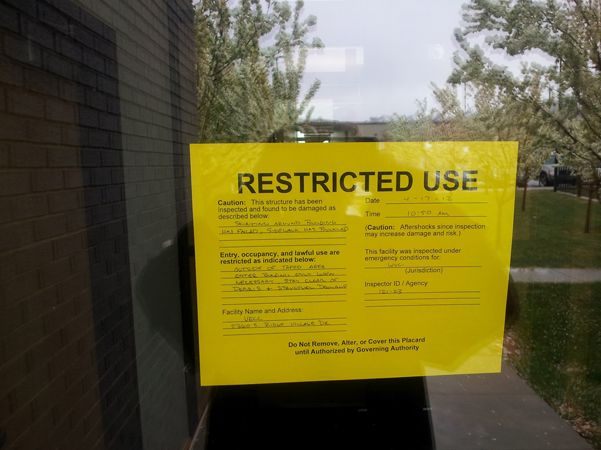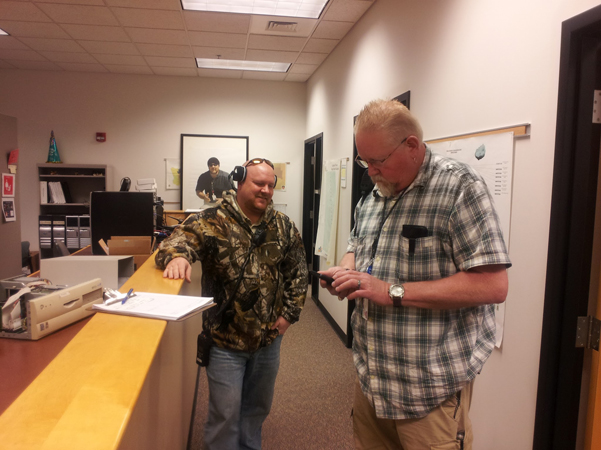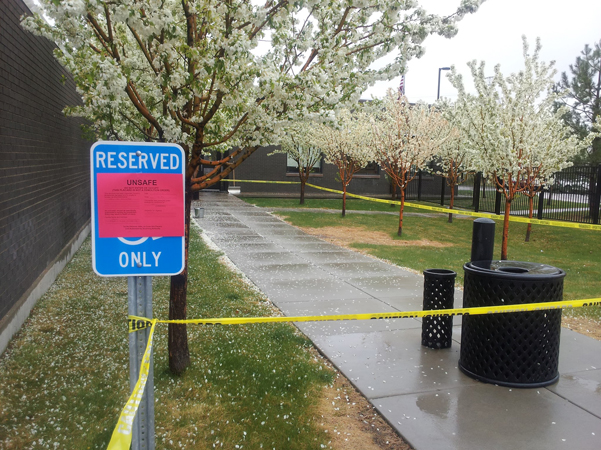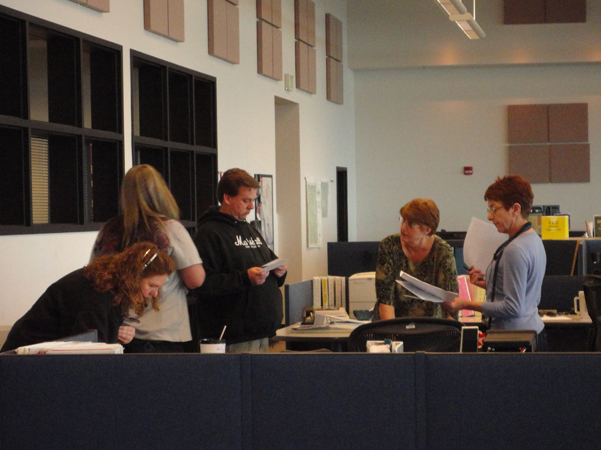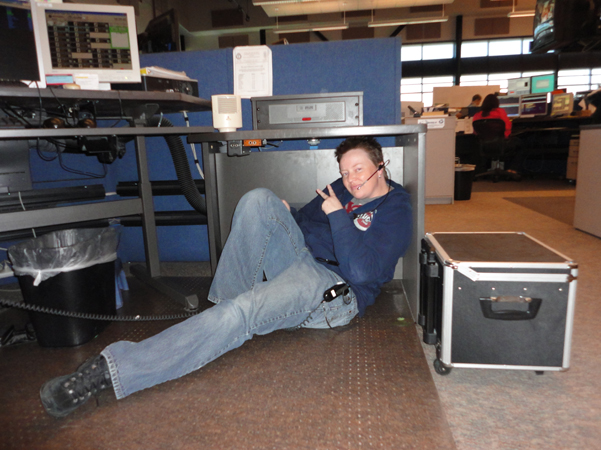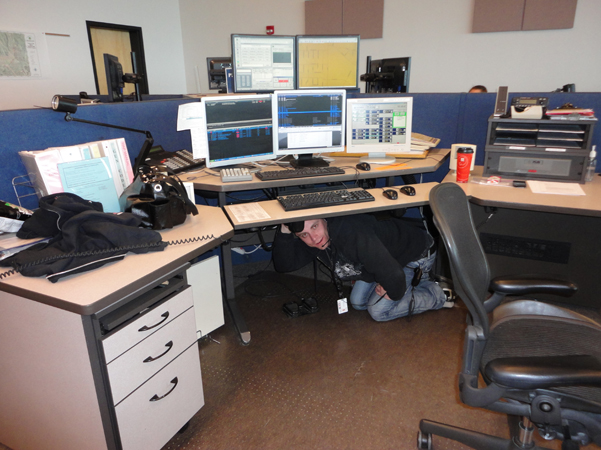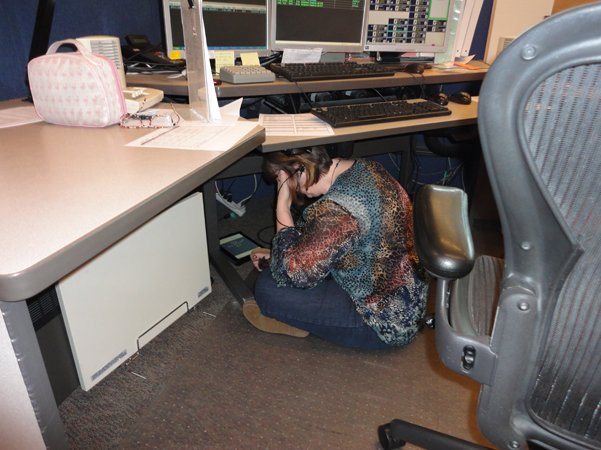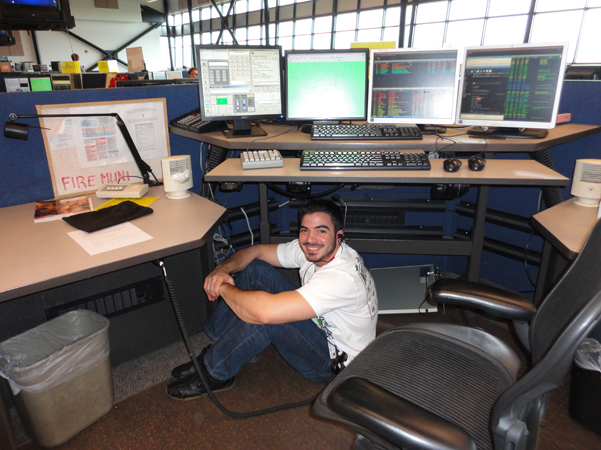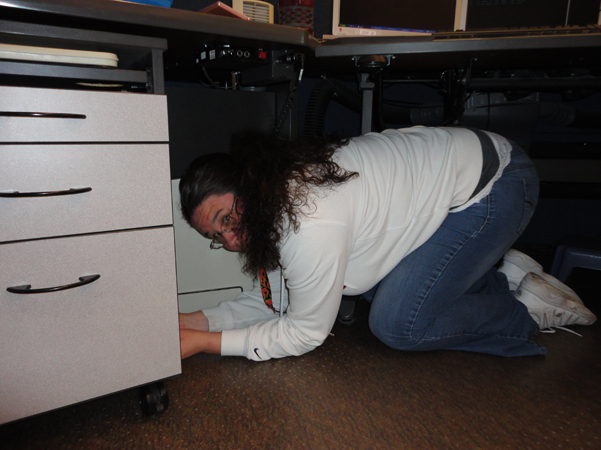Salt Lake Valley Emergency Communications Center (VECC) & the Great Utah Shakeout Exercise
By Beth Todd
 The Wasatch Fault that runs from Malad City, Idaho, to Fayette, Utah, is one of the longest and most active normal faults in the world. It is subdivided into 10 segments, and at least 26 large (M6.5–M7.5) surface-faulting earthquakes have occurred over the past 10,000 years. All but two of these earthquakes occurred on the five central segments (Brigham City to Nephi in Utah). The amount of time between surface-faulting earthquakes on these five segments averages about 300–400 years. The most recent large earthquake on the Wasatch fault took place about 350 years ago on the Nephi segment.
The Wasatch Fault that runs from Malad City, Idaho, to Fayette, Utah, is one of the longest and most active normal faults in the world. It is subdivided into 10 segments, and at least 26 large (M6.5–M7.5) surface-faulting earthquakes have occurred over the past 10,000 years. All but two of these earthquakes occurred on the five central segments (Brigham City to Nephi in Utah). The amount of time between surface-faulting earthquakes on these five segments averages about 300–400 years. The most recent large earthquake on the Wasatch fault took place about 350 years ago on the Nephi segment.
The scenario of the Great Utah Shakeout exercise was that a catastrophic 7.0 earthquake struck the Salt Lake segment of the Wasatch Fault at 10:15 in the morning on April 17, 2012. The event directly impacted nine (9) counties (Salt Lake, Davis, Weber, Utah, Tooele, Box Elder, Morgan, Summit and Wasatch), stretching from roughly Brigham City in the north to Santaquin in the south. The simulated event impacted approximately 80% of Utah’s population.
The Great Utah Shakeout exercise had two parts. The first was the first ever statewide earthquake drill and the second was a three-day exercise that involved Emergency Operations Centers (city, county, state and federal levels), dispatch centers, police/fire departments, volunteer organizations and the private sector throughout a nine-county area, testing their ability to respond to a catastrophic M7.0 earthquake along the Salt Lake segment of the Wasatch Fault.
VECC jumped in with both feet and decided to do two days of functional and tabletop exercises, along with supporting the cities of Salt Lake County in the exercise simulation center. The first day was filled with functional exercises for both dayshift and graveyard shift and included doing:
- drop, cover and hold on drill,
- employees exercising their family communications plan,
- having lunch out of our emergency supplies,
- cutting commercial power and operating off the generator for five hours,
- a building inspection,
- testing communications with the Salt Lake County EOC using non-traditional methods (satellite phone and ham radio),
- lockdown radio drill with all field personnel,
- distributing 72-hour kits to on-duty employees,
- inventory of the emergency supplies,
- using GETS/WPS to make telephone calls,
- testing the Emergency Notification System, and
- incident dispatching for one of the police departments during a business containment exercise.
The second day was two back-to-back tabletop exercises for management and key personnel to discuss transportation and infrastructure issues. Part of the transportation issues discussed were which roads were believed to be impassable and how many of VECC’s employees would be able to travel the road network to get to the Center after an earthquake. The infrastructure issues tabletop discussed such items as how long it would take to replace damaged equipment (CAD server = up to 3 months, HVAC Chiller = 6–9 weeks etc.), where employees should respond to if they are unable to get to or contact VECC due to the telephone network being overwhelmed, what the resource requesting and reporting up process for VECC is if additional resources are needed, and department prioritization of shutting down technological systems.
VECC administration and the employees all felt the exercises were very successful. However, at the end of the day, it became obvious that administratively we had more questions than answers and we have a lot of work to do in order to be better prepared to handle a disaster. Our employees worked very hard and displayed an amazing amount of teamwork during the exercise. If the exercise would have included actually evacuating the building, the employees would have been ready to do so.
One of the biggest lessons we learned is we do not have a clear mission from our agencies on what to do after a disaster … from hour 1 to hour 24/48+. Traditionally, dispatch will dispatch units until told otherwise; however in a catastrophic earthquake the agencies will be overwhelmed as soon as the ground stops shaking. Once agencies have some situational awareness, the IC/AC will begin prioritizing incidents and resources. Dispatch will be expected to do things differently, however at this point, do we really have a clear picture of what the new operations will look like or what the dispatch center role will be? For the most part, I would say no.
This can be particularly difficult for centralized dispatch centers who have multiple customers. Which of their agencies/incidents get the highest priority and how is that prioritization determined? If there are 100 building collapses with trapped victims across multiple jurisdictions, how does the dispatcher determine which one to assign the resources to first? First come, first served? Most number of trapped victims? If so how does dispatch know for sure how many trapped victims there are? For all dispatch centers, the answer is, you don’t. On a wide-scale disaster such as the earthquake simulated during the Great Utah Shakeout, the determination of which incidents to handle first and which units to send is made way above the dispatcher’s heads once the Incident/Area Commanders have established command. So what dispatch centers need to do is establish relationships now with those that do make those decisions, so that dispatch and their agencies will be on the same page when it happens, and will already know what their new mission will be and how they will be able to carry out their orders when they come.
About the Author
Beth Todd is emergency preparedness coordinator for Salt Lake Valley Emergency Communications Center.



